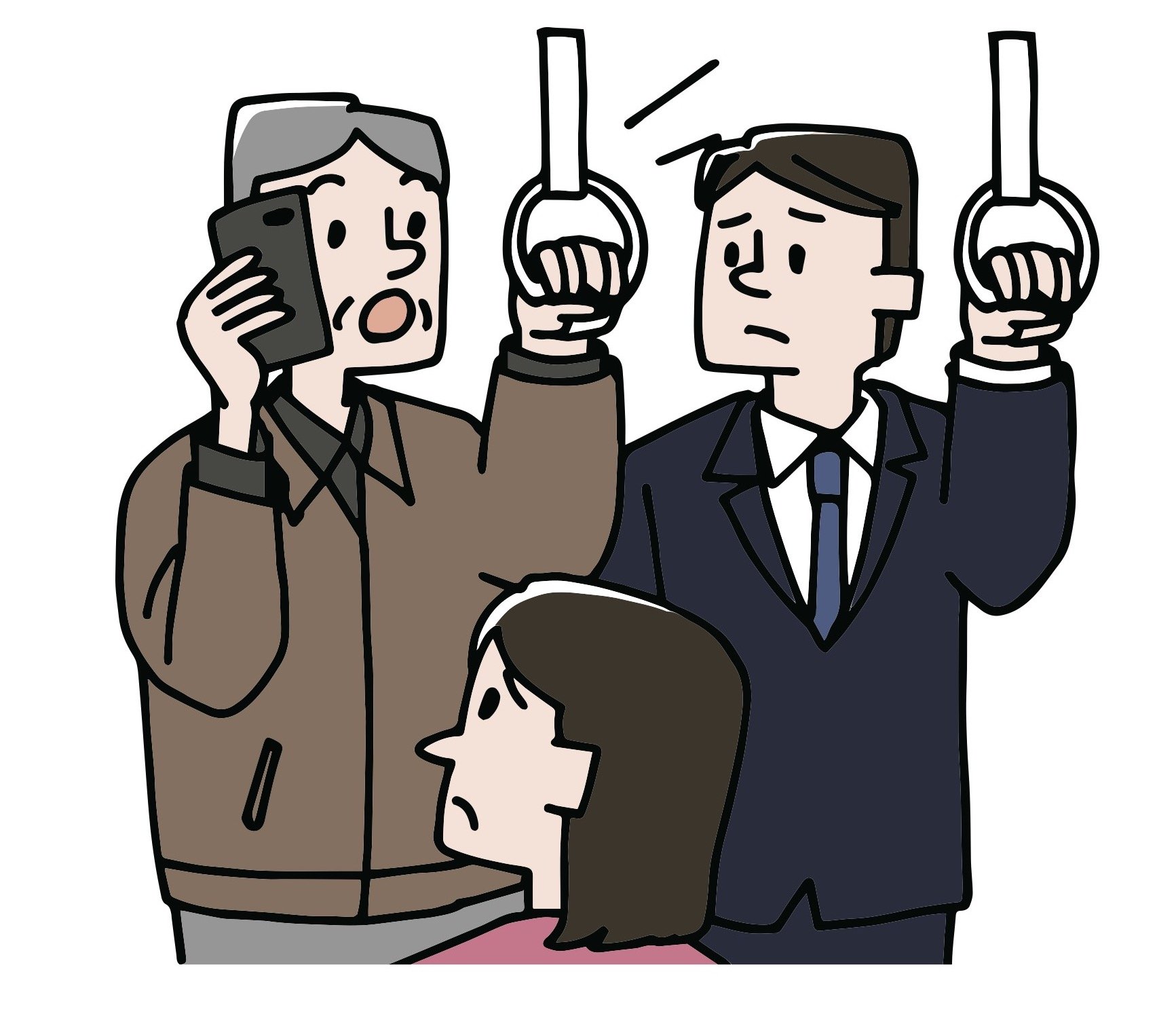Dining Etiquette in Japan: Basic Manners and Etiquette
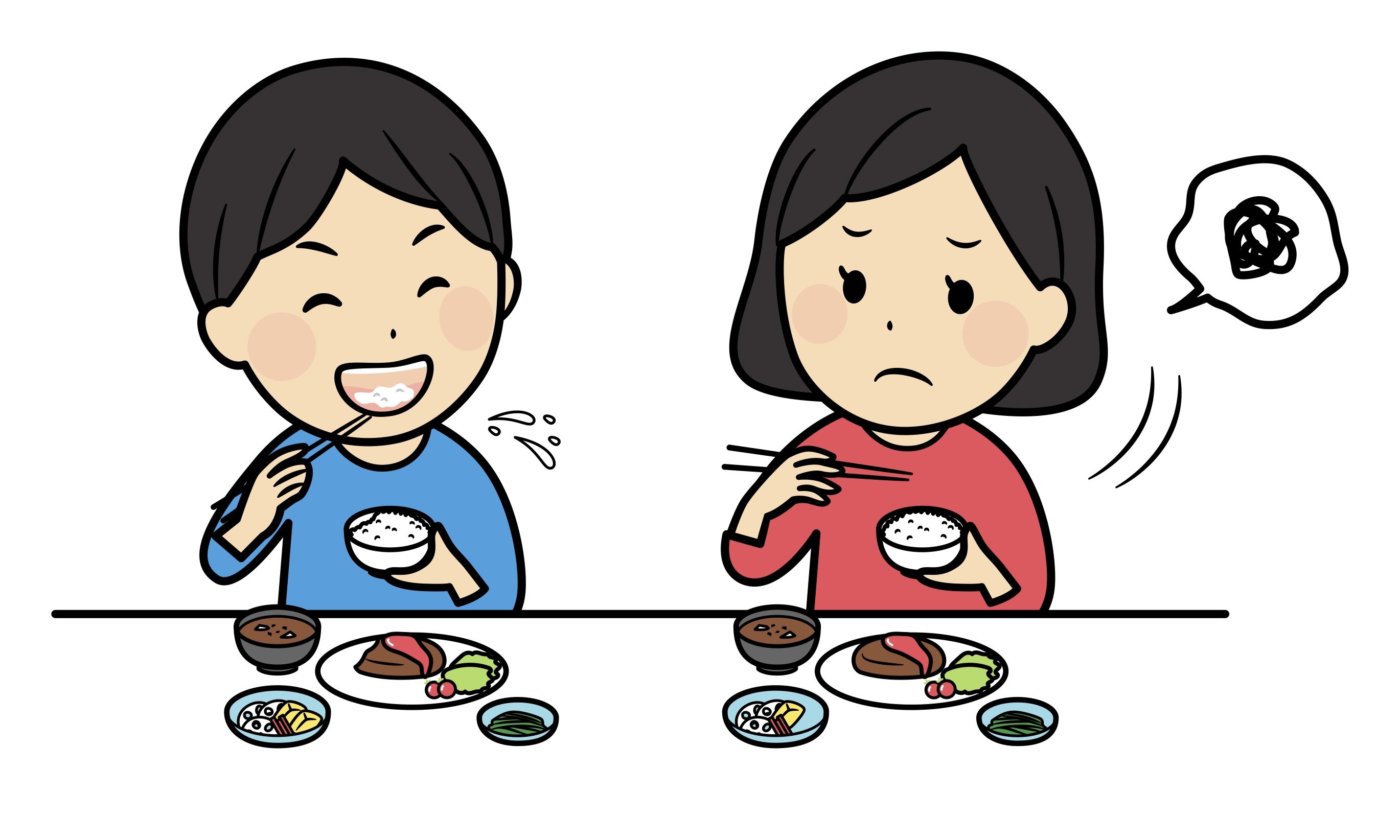
Dining manners are very important for foreigners working in Japan. Japanese culture is reflected in behavior and words during meals. By showing proper etiquette, you can make a good impression on those you eat with.
In this article, we will provide a simple explanation of the basics of dining etiquette that will be useful for living and working in Japan.
Greetings Before and After Meals
In Japan, we say greetings before and after meals. This shows your gratitude towards the person who made ithe meal, as well as appreciation towards the ingredients used.
|
Timing |
Greetings |
Meaning |
|
Before eating |
いただきます |
"Thank you for the food." |
|
After eating |
ごちそうさまでした |
"Thank you, it was delicious." |
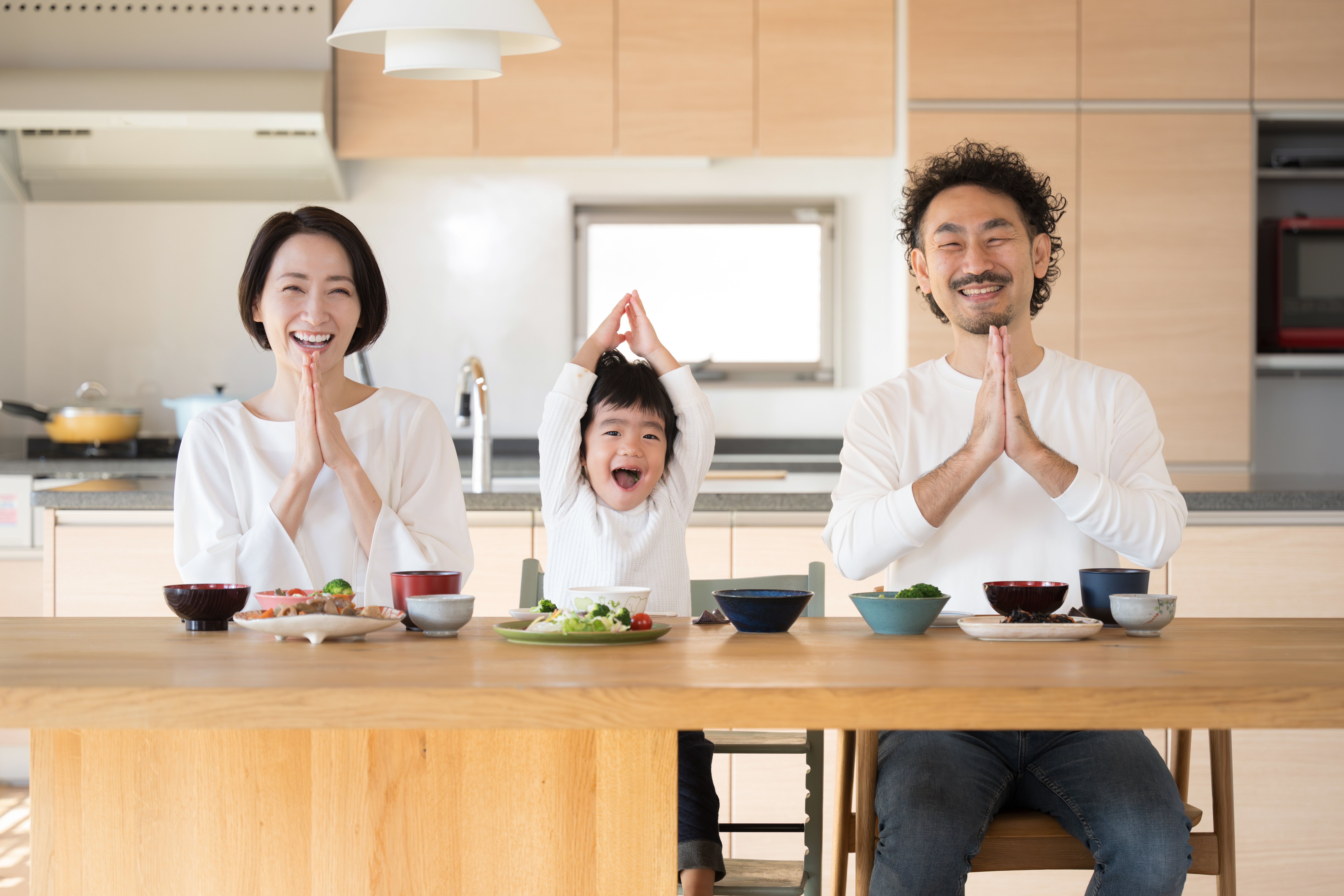
Chopstick Etiquette
Chopsticks are often used in Japanese dining. However, there are some things you should not do when using them. Take a look at the table below and take note.
|
Not Good Manners |
Explanation |
|
さしばし |
Eating food with chopsticks |
|
よせばし |
Pulling a bowl towards you with chopsticks |
|
ねぶりばし |
Licking chopsticks |
|
渡しばし |
Placing chopsticks horizontally on the bowl |
|
つきばし |
Playing with food by poking/stabbing it |
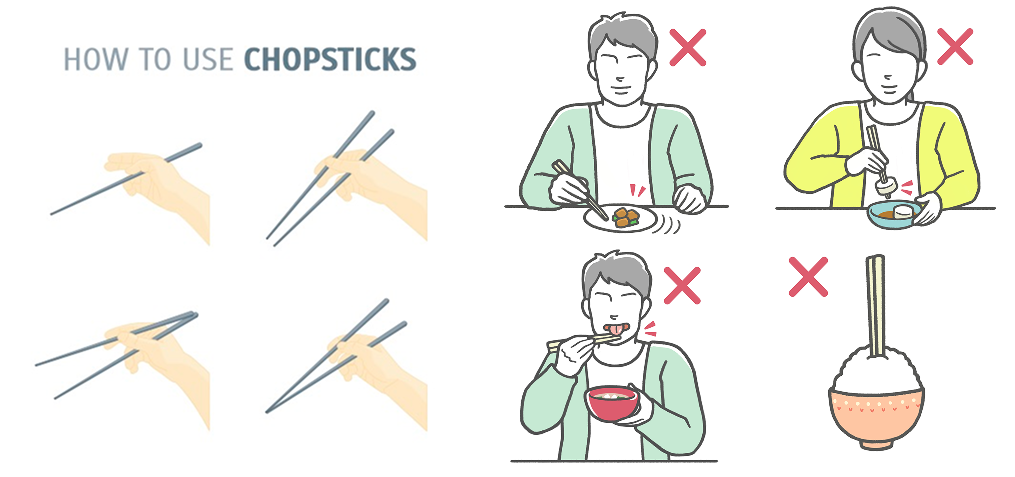
Important Points :
-
Hold chopsticks correctly and do not point them towards anywhere but your mouth, namely towards people and utensils.
-
Passing food from one person's chopsticks to another's is also a taboo in Japan, as it is reminiscent of a funeral.
Dining Etiquette
① Eat Quietly
In Japan, it is considered bad manners to make loud chewing noises while eating. However, it is okay to slurp when eating soba, udon, and ramen. Slurping is accepted in these scenarios, as it is seen as a way to cool down hot food, and as a sign that you are enjoying the food.

② How to Hold Tableware
- The proper etiquette to eat from a rice bowl or soup bowl is by holding it in your hand.
- Hold plates with both hands.
- Don't bring your face closer to the table to eat.
3. Don’t Leave Food Uneaten
- It is good manners to finish your food.
- When ordering or dividing a shared plate, only take as much as you can eat.
Etiquette When Eating Out (Restaurants, Cafeterias, Convenience Stores)
① When Entering The Store and Ordering
- When you enter the store, you will be greeted with 「いらっしゃいませ」("Welcome!"). You do not necessarily have to respond.
- Look at the menu, and when ordering, say 「これをください」("I'd like this") or 「◯◯をお願いします」("I'd like ◯◯, please").
② Checkout
- Payment is done at the cash register. There may also be cases where you pay at the table.
- When paying, it is customary to place the money on a tray rather than handing it over directly to someone.
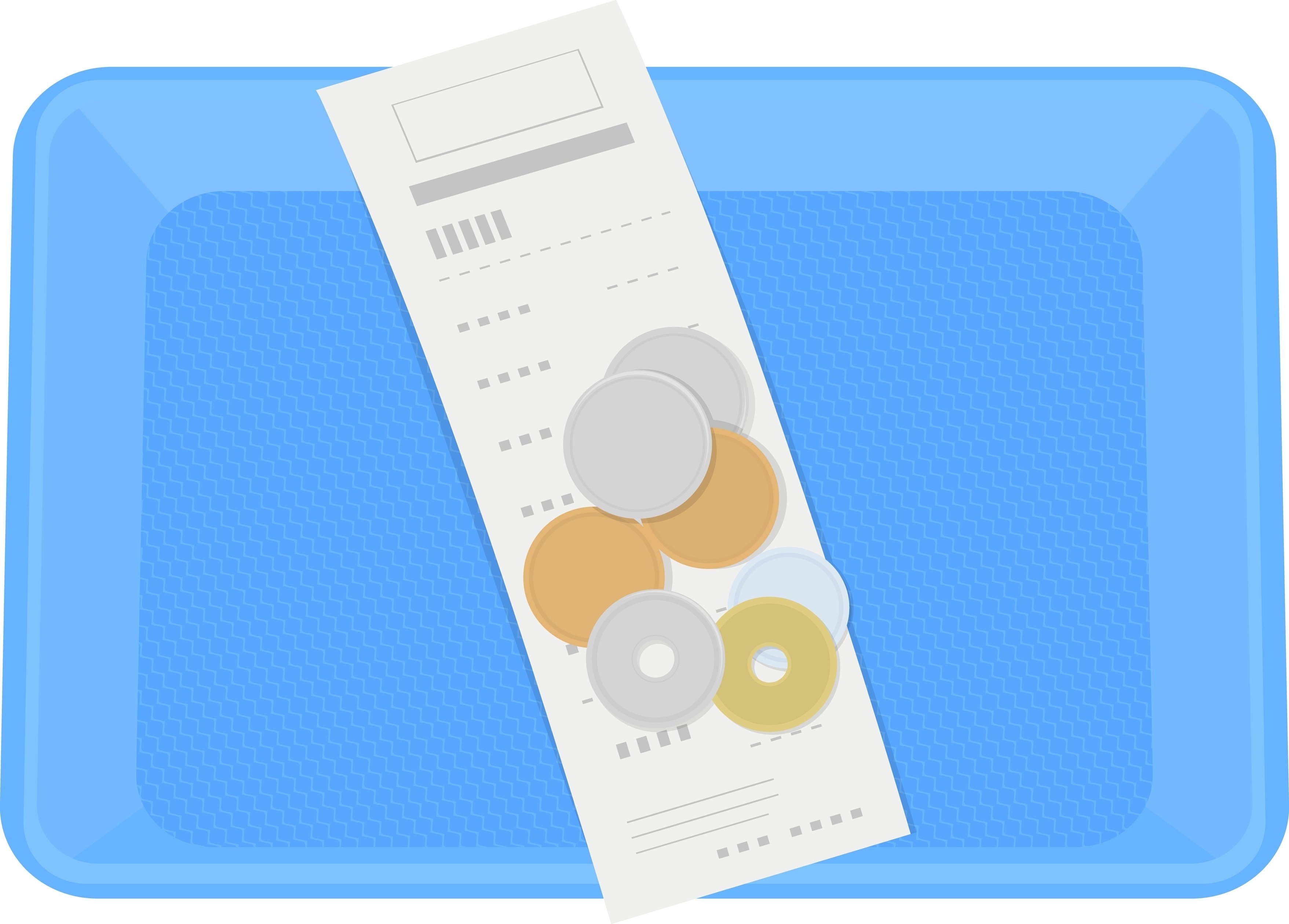
3) Eating and Drinking At Convenience Stores
- It is considered good manners to eat food purchased at a convenience store either outside, or in the eat-in corner inside the store.
- Separate your trash and throw it away in the store's trash bins.
Dining Etiquette At Home (When Eating At A Japanese Person's Home)
- Take off your shoes before entering their home.
- Japanese people say 「いただきます」("Itadakimasu") before eating, and you should join in on this greeting.
- Even if you take just one bite of what is served, it will leave a good impression.
- When you've finished eating, say 「ごちそうさまでした」 ("Gochisousamadeshita"). Helping the hosts clean up the table will leave a great impression.
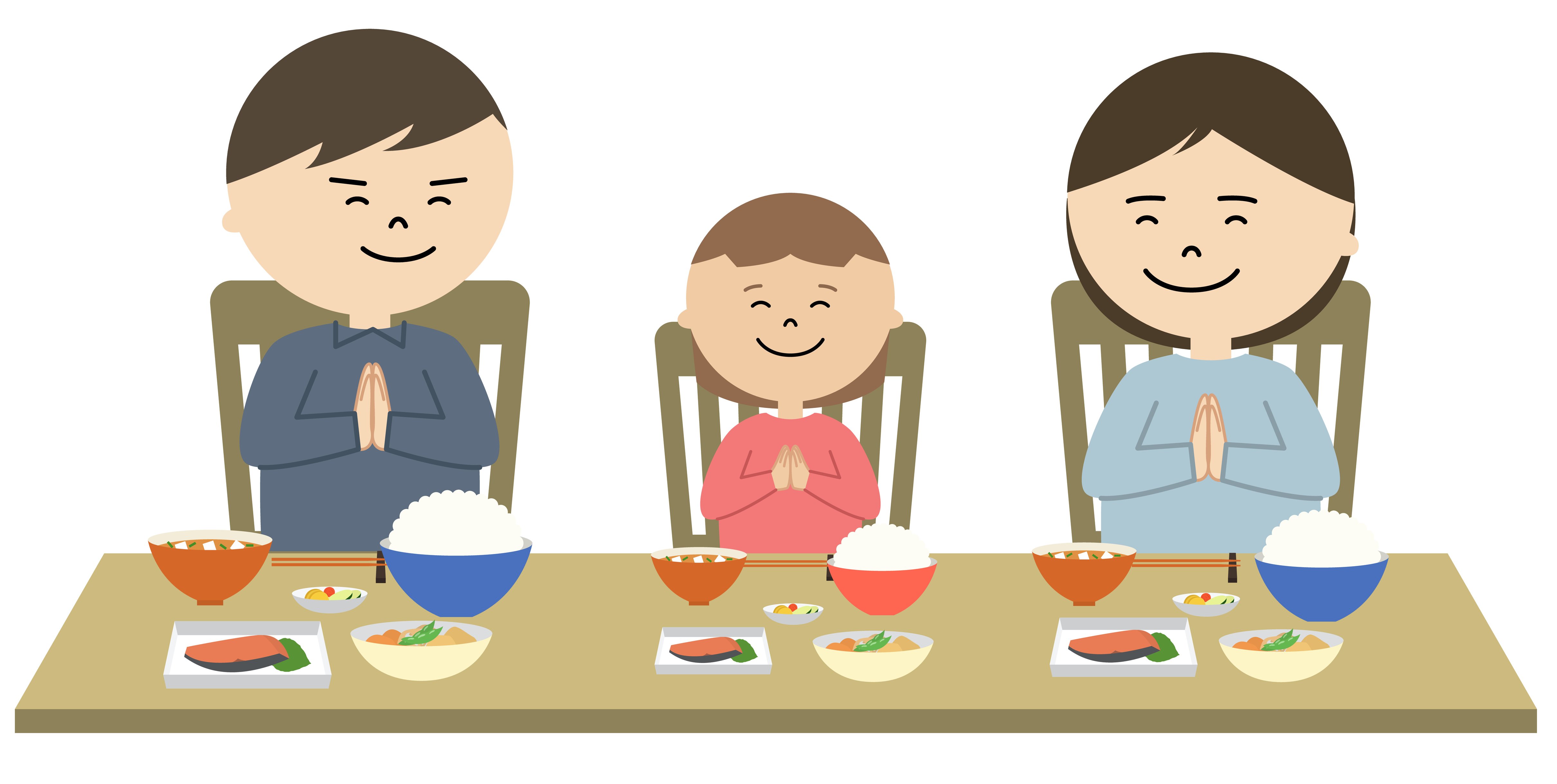
Other Points :
|
Scene |
Manners Examples |
|
Drinking party |
Don't start drinking before the toast. |
|
Buffet |
Don't put too much on your plate, only take what you can finish. |
|
Lunch box |
Take your trash home with you, or dispose of it in the designated trash bins. |
Summary: Follow The Rules And Have A Pleasant Meal
The basis of Japanese dining etiquette is consideration for those around you. It may seem difficult at first, but it's important to learn and practice it little by little.
- Don't forget to say your greetings (itadakimasu, gochisousama).
- Be careful how you use chopsticks.
- Be mindful of how you hold your dishes and how you eat.
- Please follow the respective rules of when eating out and at home.
Learning the proper etiquette will make dining in Japan a more enjoyable and pleasant experience!


